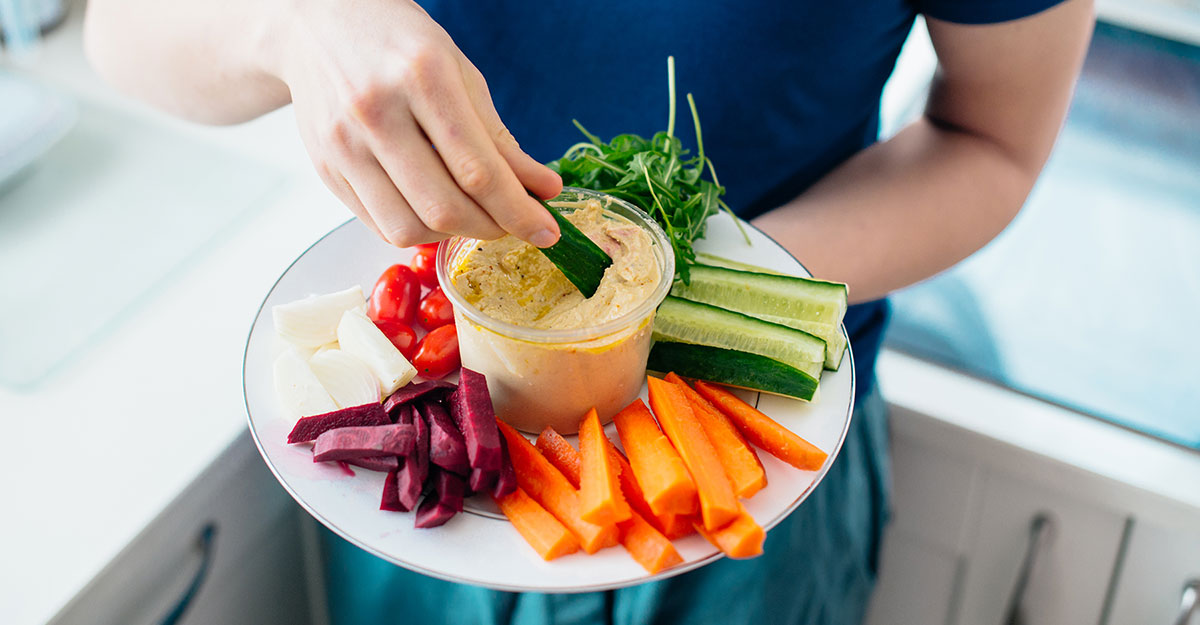Fiber: The Powerhouse Nutrient

Are You Getting Enough Fiber? Probably Not.
Fiber is a powerhouse nutrient, yet most of us aren’t getting enough of it. The Institute of Medicine recommends the following:
- Women: 25 grams of fiber per day
- Men: 38 grams of fiber per day
Most of us are eating about half that amount. In fact, only 5% of men and 9% of women are getting the recommended daily amount of dietary fiber.
Why is fiber important?
Fiber is the part of plant foods (the carbohydrates) that your body can’t directly digest or absorb. For a long time, it was thought that fiber’s main benefit was relieving constipation. It was also considered good for weight management as high-fiber foods help you feel full, helping to prevent you from eating more than your body needs.
Although fiber does help prevent constipation and help you feel fuller, it does a whole lot more too. A diet high in fiber is important because it helps:
- Lower cholesterol
- Reduce the risk of heart disease and diabetes
- Strengthen your immune system
- Regulate inflammation in your body
- Clean your intestinal tract, flushing out anything harmful
- Slow the absorption and release of sugars into your bloodstream
- Feed the good bacteria in your gut
Feeding the gut microbiome
There is a growing body of research that shows that a fiber-rich diet can significantly affect the millions of microorganisms that live in your gastrointestinal tract, known as the gut microbiome.
Fiber feeds the good bacteria in your gut, creating a diverse and healthy gut microbiome. These good bacteria (and other organisms) play a critical role in your gut health and thus your overall health. They assist the body with digestion, enable it to better absorb nutrients, help protect it from disease, prevent bad bacteria from growing, and allow your gut to exchange information with your brain.
Feeding the gut microbiome is one of the most important roles that fiber plays and an excellent reason to up your fiber intake!
Where does fiber come from?
Fiber is found in whole fruits and vegetables, whole grains, legumes (beans and pulses), nuts, seeds, and more. There is NO fiber in animal products — meat or dairy.
There are two types of fiber: soluble and insoluble.
Soluble fiber dissolves in water and gastrointestinal fluids, creating a gel. This gel feeds the good bacteria in your gut. Soluble fiber slows digestion and helps you absorb nutrients from the food you eat. This helps lower cholesterol levels, reduce the risk of heart disease, and regulate blood sugar levels. Foods with soluble fiber include oatmeal, nuts, beans, lentils, apples, and blueberries.
Insoluble fiber stays intact as it travels through your digestive system. This form of fiber speeds up the movement and processing of waste, helping prevent gastrointestinal blockage and constipation or reduced bowel movements. Foods with insoluble fibers include whole wheat bread, whole grain couscous, brown rice, legumes, carrots, cucumbers, and tomatoes.
How can I get more fiber into my diet?
The more fiber you eat, the greater the benefit to your health. And lots of small changes can add up to a lot more fiber. Here are some tips for increasing fiber intake:
- Use beans or tofu instead of meat in your favorite recipes, e.g., chili and stir fry.
- Eat whole fruits instead of drinking fruit juices.
- Replace chips and candy with nuts or raw vegetables for snacking.
- Cook at home rather than eating out for more control over what goes into your meals.
- Swap white rice, bread, and pasta for brown rice and whole grain products.
- Choose breads and cereals that have “whole grain” as their first ingredient.
Tip: Pay close attention to food labels when it comes to grains. “Multigrain”, “7-grain”, and other names often found on bread and other products do not mean that it’s a “whole” grain. Make sure the product you are buying lists “whole grain” as the first ingredient to ensure it is fiber rich.
Some surprisingly high fiber foods you may not know about
Here’s more high fiber foods to help get you started upping your intake of this important super nutrient:
- Chia seeds: one tablespoon, 4 grams of fiber
- Ground flaxseed: one tablespoon, 2 grams of fiber
- Chickpeas: one half cup, 6 grams of fiber
- Lentils: one half cup of cooked lentils, 8 grams of fiber
- Avocado: one half cup, 5 grams of fiber
- Frozen peas: one cup, 9 grams of fiber
- Bananas: 4 to 6 grams of fiber, depending on their size
- Popcorn: one cup, 2 grams of fiber
- Artichokes: one medium artichoke, 7 grams of fiber
Tip: Remember to increase your fiber intake slowly over time to help your body get used to it. Drinking more water as you add more fiber will help you ease any gas, pain, or bloating you may experience.
“Eat food, not too much, mostly plants.”
We love this quote from Michael Pollan’s book, In Defense of Food: An Eater’s Manifesto. Pollan describes “food” as anything your great grandmother would recognize as food, i.e., anything unprocessed or minimally processed. Following this advice will help you add fiber to your diet.
Get some healthy eating help
At Nature’s Link, we appreciate that there is a lot of information out there about the “right” way to eat and that it can all be a bit overwhelming. We want to help simplify the information and make healthy eating accessible to everyone.
Dr. Kristine Devillier is a board-certified naturopath and master herbalist. She brings more than 20 years’ experience and a wealth of knowledge about natural health to each consultation — providing practical, easy-to-follow advice on physical, mental, emotional, and spiritual health. Dr. Devillier creates a custom-made plan for your life no matter how busy you are and how many obstacles you think you may have.
If you want to improve your health using a combination of traditional and alternative techniques, give us a call at 337-332-2705 or reach us online for more information. We offer natural health consultations in Breaux Bridge, Lafayette, and the entire Acadiana area.




